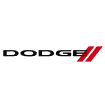If you don't see your car, it means that it is not currently supported.
Read here to learn which cars are good candidates for adding openpilot support.
Generally, newer Hyundai and Toyota models are great choices. These are some of our favorites:

Acura (3)




Audi (6)







Chevrolet (5)






Chrysler (5)






comma (1)


CUPRA (1)


Dodge (1)


Ford (15)
















Genesis (13)














GMC (1)


Honda (21)






















Hyundai (43)












































Jeep (2)



Kia (38)







































Lexus (21)






















Lincoln (2)



MAN (2)



Mazda (2)



Nissan (4)





Ram (1)


SEAT (2)



Subaru (10)











Škoda (9)










Toyota (45)














































Volkswagen (36)




































openpilot FAQ
comma openpilot is an open source driver-assistance system. Currently, openpilot performs the functions of Adaptive Cruise Control (ACC) and Automated Lane Centering (ALC) for compatible vehicles. It performs similarly to Tesla Autopilot and GM Super Cruise. openpilot can steer, accelerate, and brake automatically for other vehicles within its lane. Check it out on GitHub.
In order to enforce driver alertness, openpilot includes a camera based Driver Monitoring (DM) system that alerts the driver when distracted or asleep. However, even with an attentive driver, we must make further efforts for the system to be safe. We have designed openpilot with two other safety considerations:
- The driver must always be capable to immediately retake manual control of the vehicle, by stepping on either pedal or by pressing the cancel button.
- The vehicle must not alter its trajectory too quickly for the driver to safely react. This means that while the system is engaged, the actuators are constrained to operate within reasonable limits.
openpilot Automated Lane Centering (ALC) system does not automatically drive the vehicle or reduce the amount of attention that must be paid to the area in front of the vehicle. The driver must always keep control of the steering wheel and be ready to correct the ALC system action at all times.
Many factors can impact the performance of openpilot ALC, causing it to be unable to function as intended. These include, but are not limited to:
- Poor visibility (heavy rain, snow, fog, etc.) or weather conditions are interfering with sensor operation.
- The road facing camera is obstructed, covered or damaged by mud, ice, snow, etc.
- Obstruction caused by applying excessive paint or adhesive products (such as wraps, stickers, rubber coating, etc.) onto the vehicle.
- The device is mounted incorrectly.
- When in sharp curves, like on-off ramps, intersections etc...; openpilot is designed to be limited in the amount of steering torque it can produce.
- In the presence of restricted lanes or construction zones.
- When driving on highly banked roads or in presence of strong cross-wind.
- Extremely hot or cold temperatures.
- Bright light (due to oncoming headlights, direct sunlight, etc.)
- Driving on hills, narrow, or winding roads.
The list above does not represent an exhaustive list of situations that may interfere with proper operation of openpilot components. It is the driver's responsibility to be in control of the vehicle at all times.
openpilot Adaptive Cruise Control (ACC) is not a system that allows careless or inattentive driving. It is still necessary for the driver to pay close attention to the vehicle’s surroundings and to be ready to re-take control of the gas and the brake at all times.
Many factors can impact the performance of openpilot ACC, causing it to be unable to function as intended. These include, but are not limited to:
- Poor visibility (heavy rain, snow, fog, etc.) or weather conditions are interfering with sensor operation.
- The road facing camera or radar are obstructed, covered, or damaged by mud, ice, snow, etc.
- Obstruction caused by applying excessive paint or adhesive products (such as wraps, stickers, rubber coating, etc.) onto the vehicle.
- The device is mounted incorrectly.
- Approaching a toll booth.
- When driving on roads with pedestrians, cyclists, etc...
- In presence of traffic signs or stop lights, which are not detected by openpilot at this time.
- When the posted speed limit is below the user selected set speed. openpilot does not detect speed limits at this time.
- In presence of vehicles in the same lane that are not moving.
- When abrupt braking maneuvers are required. openpilot is designed to be limited in the amount of deceleration and acceleration that it can produce.
- When surrounding vehicles perform close cut-ins from neighbor lanes.
- Driving on hills, narrow, or winding roads.
- Extremely hot or cold temperatures.
- Bright light (due to oncoming headlights, direct sunlight, etc.)
- Interference from other equipment that generates ultrasonic waves.
The list above does not represent an exhaustive list of situations that may interfere with proper operation of openpilot components. It is the driver's responsibility to be in control of the vehicle at all times.
When openpilot is enabled in settings, Lane Keep Assist (LKAS), and Automated Lane Centering (ALC) are replaced by openpilot lateral control and only function when openpilot is engaged. Lane Departure Warning (LDW) works whether engaged or disengaged.
On certain cars, Adaptive Cruise Control (ACC) is replaced by openpilot longitudinal control.
openpilot preserves any other vehicle safety features, including, but are not limited to: AEB, auto high-beam, blind spot warning, and side collision warning.
If your car is on the list of supported cars, openpilot will automatically recognize the model of your car by performing a scan of relevant ECU firmware versions present in your car. The presence of certain ECU firmware versions is an indication of the model year, car brand, car model, and trim.
If your car isn’t recognized as supported, your device will fall back to a dashcam only mode, preserving the stock functionalities and the user will receive a notification on the screen.
The comma 3X can only run openpilot 0.9.4 and above. Running earlier versions requires making modifications to the software so that a newer AGNOS is installed.
If you face issues after installing an older version of openpilot, you can re-flash AGNOS on your device by following the instructions at flash.comma.ai.
A fingerprint is the method openpilot uses to determine which vehicle it is connected to.
Current methods use vehicle ECU firmware logging. openpilot will fingerprint the vehicle on each start up.
If openpilot detects a firmware version not previously logged, it will need to be added to the codebase. Guides on adding new firmware can be found here.
Have a question or want to learn more? There are thousands of knowledgeable community members on the Discord.
Join our DiscordCheck out the code behind the the comma 3X and openpilot. Review, fork, and contribute to the open source ecosystem.
Visit our GitHub